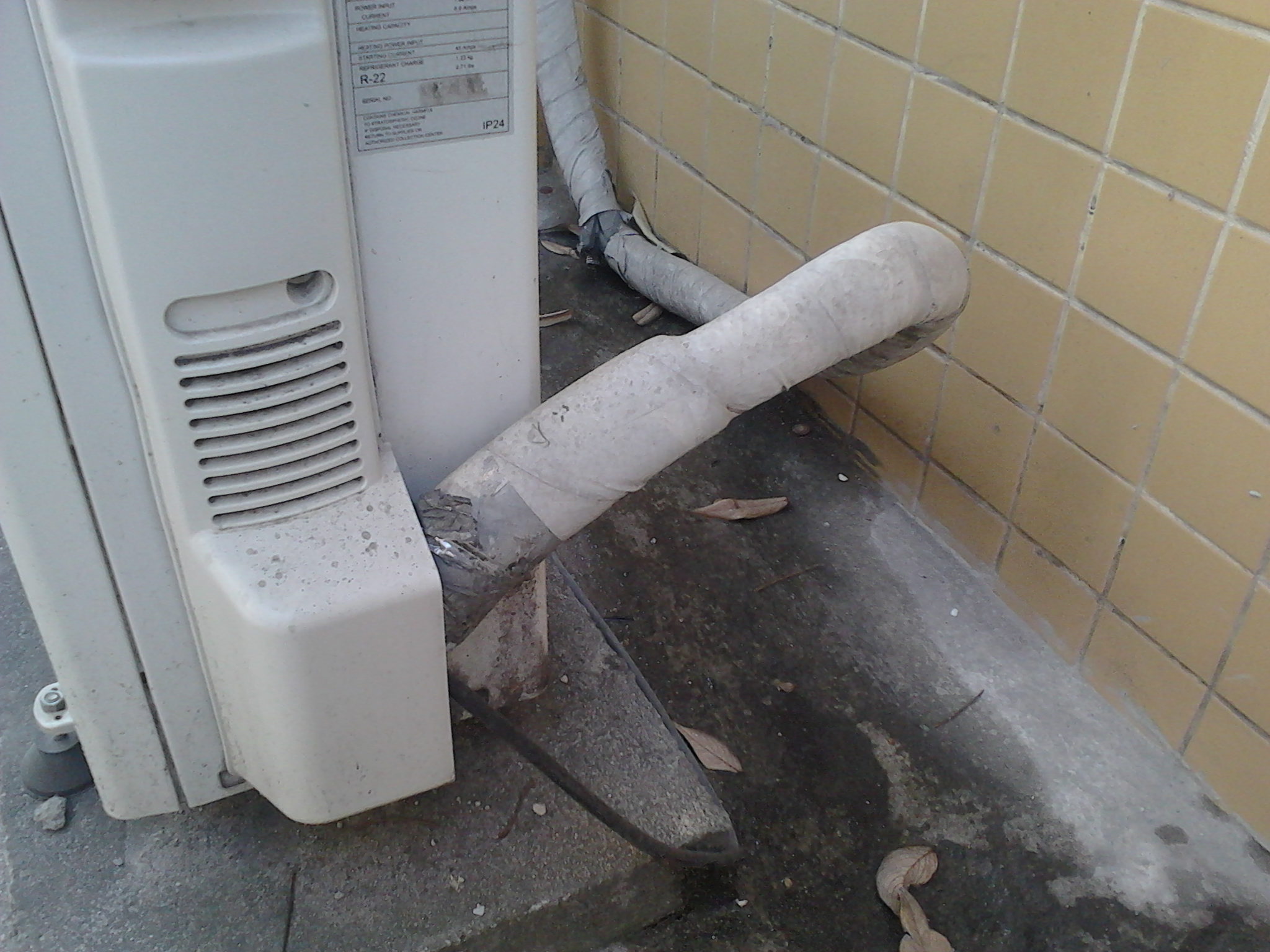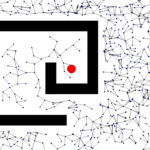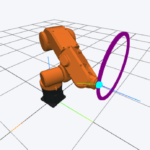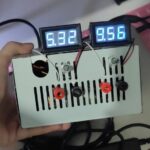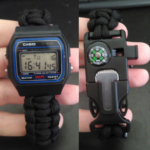This is a project that I and some colleagues made during the middle of vocational school. It is basically the measurement of how much water could be gathered from the air conditioning system at the campus. It was a simple data collection an analysis made with the intent of maybe one day being used to justify the implementation of a real system for gathering and reusing the water already being wasted. These data and analysis may be useful to someone else, so I decided to share it.
The initial problem
Water is naturally condensated inside air conditioners, it is the water contained in the humid air getting cold and condensing. Usually, this water is just drained and wasted. The campus of the place I studied did not have a proper draining system, so the water of the air conditioning units simply spread on the floor and caused structural damage to the vicinities.
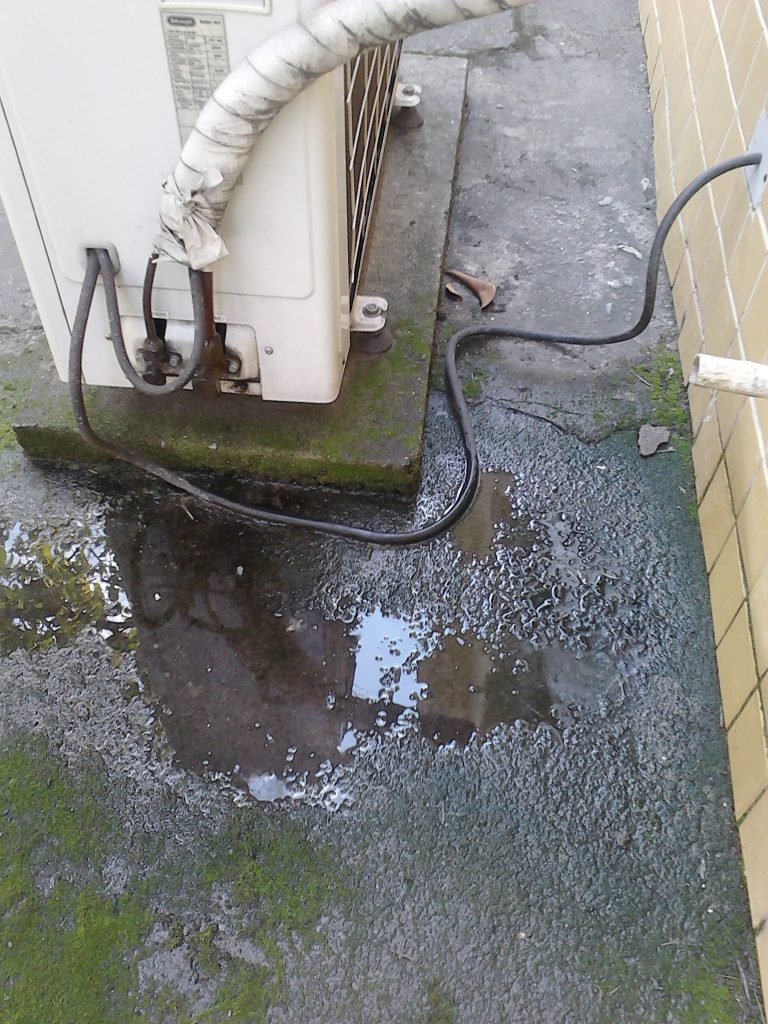
The Measurement process
To measure the water volume we built some measuring bottles. The measuring bottles were simple plastic soda bottles with the volume graduation visible at the side. To make reliable measurements these measuring devices were built following the DOQ-CGRE-027, this document is the official norm of the Inmetro (the Brazilian official metrology regulation organ) for measuring level. To build the bottles we weighted them in a semi-analytical scale and slowly put distilled water inside, with the help of a pipette. Knowing the Specific weight of the distilled water we could infer the volume of the content inside the bottle by its weight. Once the volume of liquid inside the bottle was known we made the reference marks on its side with the help of a height gauge. Following this process, we slowly built our volume scale.
Once the measuring bottles were ready we simply put them below the draining tube and waited regular time intervals to asses the water volume collected. We also measured the variation of temperature and air humidity during the measurements with the help of a thermohygrometer.
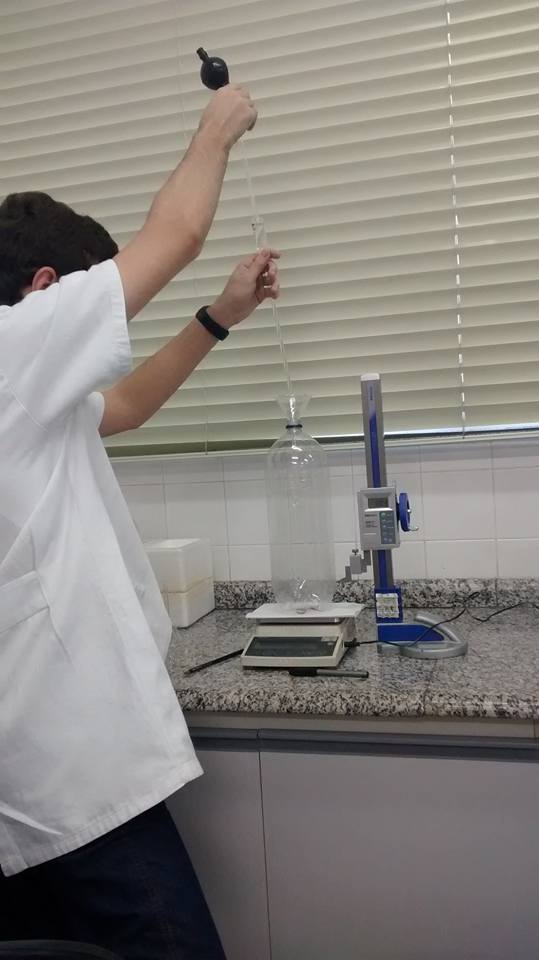
The results
We did three sets of measurements, about a month apart. They were made in an air conditioner of the Springer brand with a potency of 36000 BTU/h
| Measurements (27/08/15) | Time between measurements | Initial Relative humidity | Initial Temperature (°C) | Volume of water (mL) | Final Temperature (ºC) |
|---|---|---|---|---|---|
| 1 | 15 min | 66% | 23,9 | 500 | 24,9 |
| 2 | 15 min | 62% | 24,9 | 500 | 25,6 |
| 3 | 15 min | 59% | 25,6 | 500 | 26,0 |
| 4 | 15 min | 58% | 26,0 | 650 | 26,2 |
| Measurements (27/07/15) | Time between measurements | Initial Relative humidity | Initial Temperature (°C) | Volume of water (mL) | Final Temperature (ºC) |
|---|---|---|---|---|---|
| 1 | 15 min | 48% | 28 | 350 | 27,8 |
| 2 | 15 min | 45% | 27,8 | 275 | 26,8 |
| 3 | 15 min | 46% | 26,8 | 350 | 25,8 |
| 4 | 15 min | 52% | 25,8 | 350 | 25,3 |
| Measurements (18/06/15) | Time between measurements | Initial Relative humidity | Initial Temperature (°C) | Volume of water (mL) | Final Temperature (ºC) |
|---|---|---|---|---|---|
| 1 | 15 min | 41% | 31,8 | 300 | 31,8 |
| 2 | 15 min | 41% | 31,8 | 300 | 31 |
| 3 | 15 min | 36% | 31 | 300 | 30,7 |
| 4 | 15 min | 42% | 30 | 300 | 30,1 |
| 5 | 15 min | 38% | 30,1 | 300 | 30,5 |
| 6 | 15 min | 38% | 30,5 | 300 | 30,4 |
It is notable the great amount of water condensed by the air conditioning

